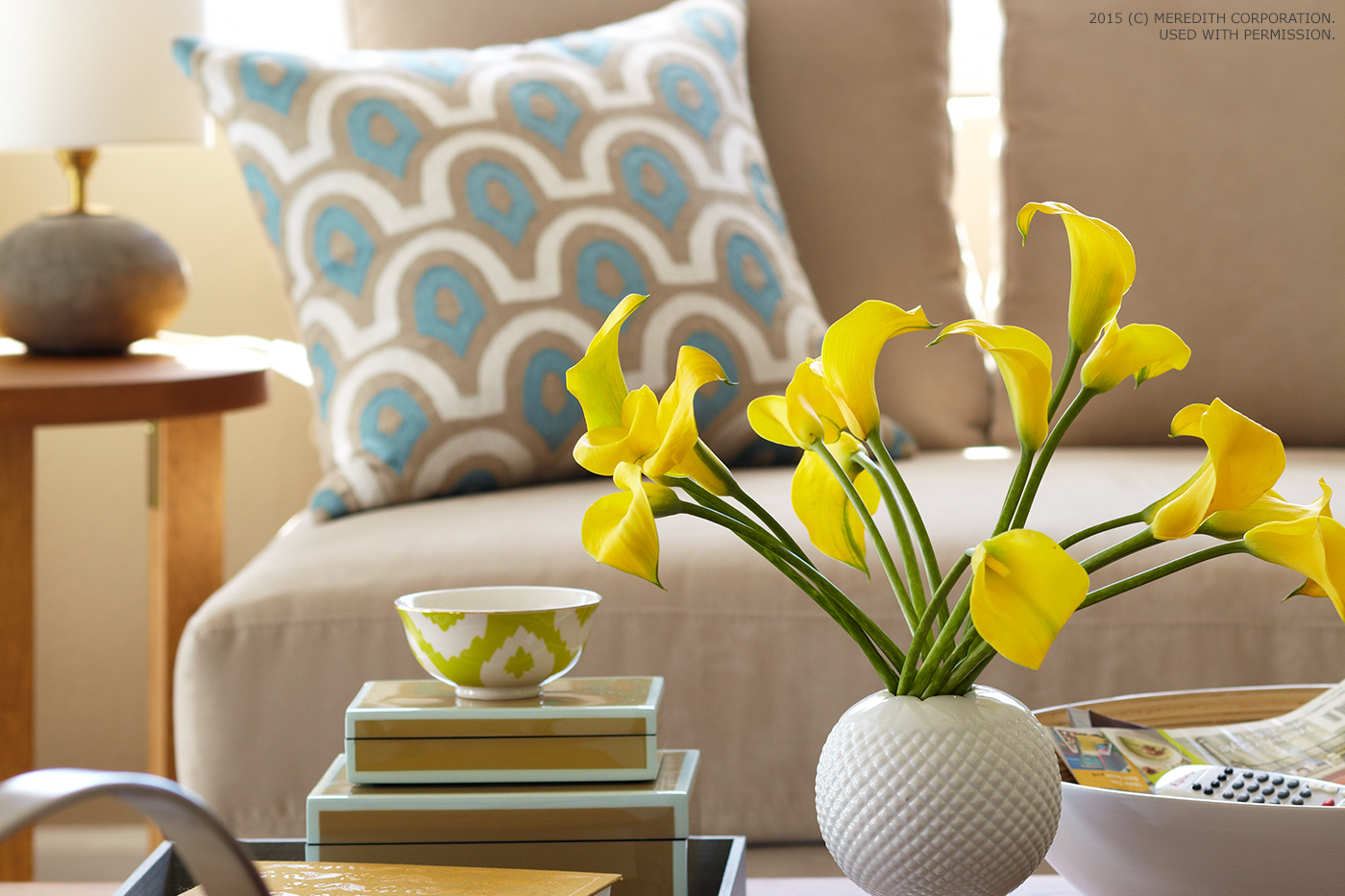A great way to revive the look of your home is to give your furniture a face-lift. Learn how to choose the best possible fabrics for your lifestyle—and what styles will withstand the test of time in your current home and any new home to come.

How will your upholstered pieces be used in your current home? And do you plan on moving soon? Sofas, chairs, and ottomans receiving only moderate amounts of wear will do fine with a less durable fabric, and should hold up well if you transition to a new home.
However, pieces subjected to daily heavy wear need to be covered in tough, durable, tightly woven fabrics.
When purchasing upholstery fabric or upholstered furniture, be aware that the higher the thread count, the more tightly woven the fabric is, and the better it will wear. (Thread count refers to the number of threads per square inch of fabric.)
Natural Fabrics
Linen: Linen is best suited for formal living rooms or more formal areas because it soils and wrinkles easily. And, it won’t withstand heavy wear. However, linen does resist pilling and fading. Soiled linen upholstery must be professionally cleaned to avoid shrinkage.
Leather: This tough material can be gently vacuumed, damp-wiped as needed and cleaned with leather conditioner or saddle soap.
Cotton: This natural fiber provides good resistance to wear, fading and pilling. It is less resistant to soil, wrinkling and fire. Surface treatments and blending with other fibers often atone for these weaknesses. Durability and use depend on the weave and finish. Damask weaves are formal; canvas (duck and sailcloth) is more casual and more durable.
Wool: Sturdy and durable, wool and wool blends offer good resistance to pilling, fading, wrinkling and soil. Generally, wool is blended with a synthetic fiber to make it easier to clean and to reduce the possibility of felting the fibers (causing them to bond together until they resemble felt). Blends can be spot-cleaned when necessary.
Cotton Blend: Depending on the weave, cotton blends can be sturdy, family-friendly fabrics. A stain-resistant finish should be applied for everyday use.
Vinyl: Easy-care and less expensive than leather, vinyls are ideal for busy family living and dining rooms. Durability depends on quality.
Silk: This delicate fabric is only suitable for adult areas, such as formal living rooms. It must be professionally cleaned if soiled.
Synthetic Fabrics
Acetate: Developed as imitation silk, acetate can withstand mildew, pilling and shrinking. However, it offers only fair resistance to soil and tends to wear, wrinkle and fade in the sun. It’s not a good choice for furniture that will get tough everyday use.
Acrylic: This synthetic fiber was developed as imitation wool. It resists wear, wrinkling, soiling and fading. Low-quality acrylic may pill excessively in areas that receive high degrees of abrasion. High-quality acrylics are manufactured to pill significantly less.
Nylon: Rarely used alone, nylon is usually blended with other fibers to make it one of the strongest upholstery fabrics. Nylon is very resilient; in a blend, it helps eliminate the crushing of napped fabrics such as velvet. It doesn’t readily soil or wrinkle, but it does tend to fade and pill.
Olefin: This is a good choice for furniture that will receive heavy wear. It has no pronounced weaknesses.
Polyester: Rarely used alone in upholstery, polyester is blended with other fibers to add wrinkle resistance, eliminate crushing of napped fabrics and reduce fading. When blended with wool, polyester aggravates pilling problems.
Rayon: Developed as an imitation silk, linen and cotton, rayon is durable. However, it wrinkles. Recent developments have made high-quality rayon very practical.
Adapted from Better Homes & Gardens. Used with permission.© Meredith Corporation. http://www.meredith.com. All rights reserved.


